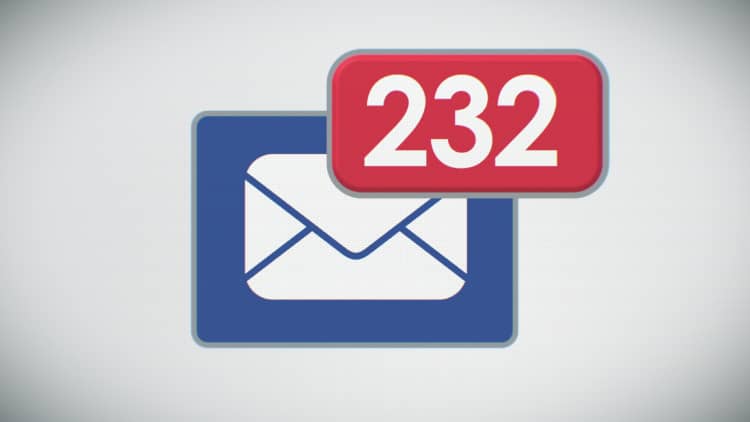Technology was supposed to save us from the time-suck of email. But we don't live in the future yet.
Recently, project management software provider Workfront conducted a survey of over 2,000 workers to determine how they spent their time. Each participant worked for a company with more than 500 employees, collaborated with others and used a computer for work.
More from PayScale:
71 percent of workers want a new job
This study offers good news for daydreamers
5 high-paying work-from-home jobs
Some of the findings might surprise you. For example, on average, workers spend 15 percent of their working hours dealing with email, according to their own self-reporting.

Here's what else the report revealed:
Workers spend less than half of their time performing the primary duties of their jobs
The workers who were surveyed for this study said that they spend a lot of time on tasks that fall outside of the primary duties of their jobs. Only 44 percent of their time was left for those responsibilities after attending to email (15 percent of their workweek), administrative tasks (11 percent), useful meetings (10 percent), time-wasting meetings (8 percent) and other interruptions.
Workers spend about 15 percent of their working hours dealing with email.
Meetings and emails often get in the way
Workers were also asked to respond to a question about what often distracted them from their primary duties.
Fifty-seven percent of those surveyed said that "wasteful meetings" got in the way of their work. "Excessive emails" was the second most popular answer — 53 percent of respondents chose that response. (It should also be noted that only 43 percent of workers said the same last year. It's possible that workers' patience for spending so much of their time on email is changing. The increase doesn't necessarily mean that workers are emailing more than they were a year ago.)
"Unexpected phone calls" and "excessive oversight" were also listed as top distractions.

Most workers want to use flextime options, but negative perceptions persist
The vast majority of the workers surveyed said that they had positive feelings about flextime. Fifty-one percent said, "I like flextime, and it works, if people know how to manage themselves." Another 21 percent said, "I love flextime, and prefer it over traditional work hours." However, 11 percent said that, "While flextime sounds good, I am afraid to use it because of negative perceptions." And, 12 percent reported that they don't have an opinion on flextime.
The majority of workers do at least some work from home
Forty-two percent of the people surveyed said that they don't do any work from home during a typical week. This means that the majority of workers, 58 percent, do work from home at least some of the time.
Thirty-eight percent said they put in one to 10 hours from home, during a typical week. Ten percent said they spend 11 to 20 hours a week. Seven percent said they spend 21 to 40 hours a week working from home. And, three percent said they put in more than 41 hours a week.

Email is taking a real toll on productivity
Email is an important tool for today's worker. That's why 94 percent of the folks surveyed said they use it for their work — it was the most popular "workplace tool." However, the amount of emails received, and the time workers spend dealing with them, might be a little excessive.
Four percent of workers said they receive more than 200 emails a day. Another 4 percent get between 151 to 200. On average, the workers surveyed received 68 emails per day. Of those emails, 27 required action, and 21 were "junk."
Additionally, the average U.S. worker has about 200 unread/unopened emails.
Sometimes, a face-to-face talk might be more efficient than email. Fifty-five percent of the workers surveyed said that the issue with email stems from "using a lengthy email to relay info that would be better conveyed through face-to-face or a phone call." And, the same percentage said that "following a conversation through lengthy email threads" was a problem.
Like this story? Like CNBC Make It on Facebook.
Don't miss: How to prepare for a video job interview


